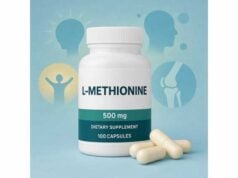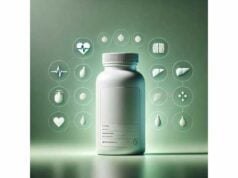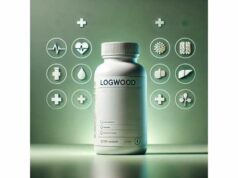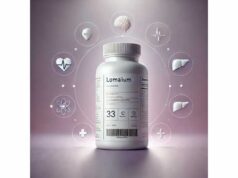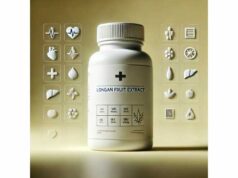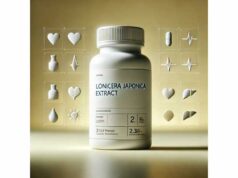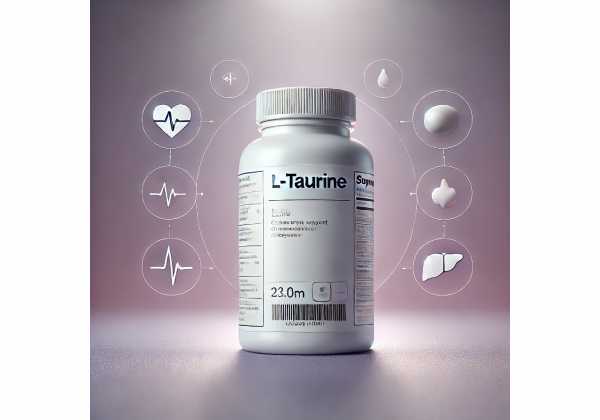
Taurine is a conditionally essential amino sulfonic acid found in the brain, heart, retina, and skeletal muscle. Unlike most amino acids, it is not used to build proteins; instead, it supports cell membrane stability, calcium signaling, bile acid conjugation, and antioxidant defense. In food, taurine occurs naturally in meat and seafood; it is also added to many energy drinks. As a supplement, taurine has been studied for cardiovascular health, exercise recovery, glucose and lipid metabolism, and healthy aging. Most adults tolerate typical doses well, and taurine’s wide distribution in human tissues explains why people often report feeling calmer and more resilient under stress. Still, the evidence differs by outcome: some benefits are supported by randomized trials, others are promising but preliminary. This guide translates the science into practical steps—what taurine does, who it may help, how to dose it, and when to avoid it—so you can make an informed, safety-first decision.
Essential Insights
- May support blood pressure, endothelial function, and exercise recovery; strongest signals at 1–3 g/day.
- Generally well tolerated; high intakes can cause GI discomfort or interact with certain conditions and drugs.
- Practical dose range: 1–3 g/day with meals; specific trials used up to 6 g/day under supervision.
- Avoid unsupervised use in pregnancy, severe kidney disease, or if a clinician has limited your fluid or electrolyte intake.
Table of Contents
- What is taurine and how it works
- What benefits are most likely?
- How to use taurine day to day
- Dosage and timing for different goals
- Safety, side effects, who should avoid
- Evidence summary and what to watch
What is taurine and how it works
Taurine (2-aminoethanesulfonic acid) is a small, sulfur-containing compound abundant in excitable tissues. Humans synthesize limited amounts from cysteine and methionine in the liver and brain, but synthesis can be inadequate in certain life stages (premature infants) or under stress. Diet therefore matters: omnivorous diets typically provide several hundred milligrams per day; strict vegan diets provide very little, which is why vegetarian intakes and plasma levels can be lower.
Unlike amino acids that form peptides, taurine functions as a free molecule. Four features explain most of its proposed benefits:
- Cellular osmoregulation and membrane stability. Taurine helps cells maintain volume and ionic balance under stress (heat, exercise, dehydration).
- Calcium handling. In the heart and skeletal muscle, taurine modulates calcium flux, which can influence contractility and fatigue resistance.
- Bile acid conjugation. The liver uses taurine to form taurocholate and related bile acids, supporting fat digestion and cholesterol homeostasis.
- Redox and inflammation control. Taurine neutralizes hypochlorous acid (a reactive species from neutrophils), forming taurine chloramine, which dampens excessive inflammatory signaling.
Circulating taurine levels decline with age across several species, including humans. In animal and primate models, restoring taurine toward youthful levels improves multiple aging phenotypes—metabolic flexibility, mitochondrial function, and markers of genomic stability. While those results are not proof for humans, they provide mechanistic context for people who feel more “even” or recover better when their diet (or a supplement) closes a taurine gap.
Taurine’s pharmacokinetics are straightforward: oral taurine is well absorbed; peak plasma levels occur within one to two hours; tissue uptake depends on sodium-dependent transporters highly expressed in the brain, retina, and myocardium. Excess is excreted in urine. Because taurine is osmotically active, large boluses on an empty stomach can draw water into the gut and cause discomfort; splitting the dose and taking with food improves tolerance.
Finally, remember that energy drinks bundle taurine with caffeine and sugars. Any alertness or performance change after a can is mostly caffeine; taurine’s role is supportive and longer-game—think cardiovascular tone, recovery, or stress buffering—rather than acute stimulation.
What benefits are most likely?
Blood pressure and vascular function. In adults with elevated blood pressure but not yet on medication, taurine has been associated with modest reductions in systolic and diastolic pressure and improvements in endothelial function after several weeks of daily use. Proposed mechanisms include improved nitric oxide bioavailability, reduced sympathetic tone, and better sodium handling. Effects are not universal, but responders tend to be salt-sensitive, metabolically stressed, or have higher baseline pressures.
Exercise recovery and performance. Taurine accumulates in skeletal muscle and participates in calcium handling and membrane stabilization. Small trials and synthesis papers report that 1–6 g taken acutely 60–120 minutes pre-exercise, or 1–3 g/day for several weeks, can improve time-to-exhaustion in endurance tasks, reduce perceived soreness, and lower muscle damage markers after eccentric work. Results vary by training status, task, and whether caffeine is also present. Practically, athletes often use 1–2 g pre-session and another 1 g post-session within their protein/carbohydrate meal.
Cardiometabolic support. Beyond blood pressure, taurine may nudge triglycerides, fasting glucose, and insulin sensitivity in a favorable direction, particularly in people with metabolic syndrome features. Mechanisms include enhanced bile acid turnover, improved mitochondrial substrate use, and lower low-grade inflammation. These effects are small to moderate and work best alongside calorie balance, fiber-rich diets, and regular training.
Stress resilience and sleep quality. Taurine modulates GABAergic and glycinergic signaling and may support a calmer autonomic tone (lower “fight-or-flight” drive). Some users report smoother sleep onset when dosing earlier in the day or with the evening meal. Formal sleep trials are limited, and taurine is not a sedative; if evening doses make you groggy the next morning, shift taurine earlier.
Retinal and neurological health. Taurine is essential for retinal development and maintenance in animals; severe taurine deficiency produces retinal degeneration. In adults, adequate taurine supports photoreceptor survival and may help glial cells manage oxidative stress. Human supplementation data for vision outcomes are sparse; still, maintaining dietary taurine is reasonable for people with very low intake patterns.
Healthy aging signals (preclinical). In mice, worms, and non-human primates, replenishing age-declined taurine improved multiple organ systems and extended lifespan in small animals. These are promising, controlled results, but they are not human longevity data. If you’re considering taurine “for aging,” treat it as a supportive nutrient, not a proven life-extension therapy, and align your expectations with the current evidence.
Where taurine is unlikely to help on its own. Taurine is not a fat-burner, nootropic stimulant, or cure for arrhythmias. It can complement a well-constructed program, but it cannot offset a lack of sleep, poor training design, or a high-sugar diet.
How to use taurine day to day
Pick a simple, verified product. Taurine is a single-ingredient commodity; choose a powder or capsule from a brand that posts lot-specific identity and purity testing. There is no advantage to exotic “complexes.” If you prefer energy drinks, remember their caffeine and sugar content; a plain taurine supplement gives you dose control without stimulants.
Start low, find your floor. Begin with 500 mg once daily with food for two to three days. If tolerated, increase to 1,000 mg/day. Many people find their “feel good” zone between 1,000 and 2,000 mg/day. Go slow if you have a sensitive stomach or a history of reflux.
Coordinate with training and work.
- Endurance days: 1–2 g 60–90 minutes before your session; another 1 g with the post-exercise meal if heavy or long.
- Strength days: 1 g 30–60 minutes pre-lift; focus more on protein and creatine for adaptation, using taurine for soreness control.
- Rest days: 1–2 g with breakfast or lunch to maintain tissue levels.
Stack smartly. Taurine plays well with electrolytes, creatine, beta-alanine (it may even balance paresthesia), omega-3s, and magnesium. Be conservative if you already use multiple calming agents (glycine, theanine, magnesium glycinate) at night—sedation is possible when combined.
Food first still matters. A diet with regular fish, shellfish, poultry, eggs, and dairy provides taurine plus protein, B-vitamins, zinc, and iron—nutrients that jointly influence energy and recovery. If you are vegetarian or vegan, consider working with a dietitian to ensure adequate sulfur amino acids and, if supplementing taurine, confirm that your product is synthetic (non-animal-derived), as most are.
Measure what matters. Instead of chasing lab tests, track functional outcomes: resting heart rate, blood pressure (home cuff), perceived recovery (0–10 scale), session quality, and sleep timing. If cardiovascular risk is your focus, combine taurine with proven levers: lower sodium if salt-sensitive, 25–30 g/day of fiber, and regular zone-2 cardio.
Know your alternatives. For blood pressure, weight loss, exercise, DASH-style diet, and ACE inhibitors/ARBs (when prescribed) carry stronger evidence than any supplement. Think of taurine as an adjunct in the healthy-lifestyle toolkit.
Dosage and timing for different goals
General wellness and stress buffering
- Dose: 1–2 g/day, split with meals.
- Timing: Morning and/or midday. Evening is acceptable if it doesn’t leave you groggy.
- Expectations: Subtle—steadier energy, less “wired” under pressure over 1–3 weeks.
Blood pressure and endothelial support
- Dose used in trials: Often 1.6–3 g/day for 8–12 weeks.
- Timing: With meals; consistent daily intake is more important than exact timing.
- Add-ons: Sodium awareness, potassium-rich foods, and moderate aerobic work enhance results.
Endurance and training recovery
- Acute performance: 1–2 g about 60–120 minutes pre-session; some protocols go up to 3–6 g acutely, but start low.
- Chronic recovery: 1–3 g/day for 2–6 weeks can reduce soreness and markers of muscle damage in some contexts.
- Stack: Pair with carbohydrate and protein post-exercise; use creatine for strength/hypertrophy goals.
Metabolic health (glucose, lipids)
- Dose: 1–3 g/day alongside diet and training.
- Timeline: Reassess at 8–12 weeks. Expect small additive gains, not dramatic shifts.
Upper intake and boundaries
- Observed safe level: Human safety evaluations support day-to-day intakes up to 6 g/day under supervision. In energy drink consumers, typical exposures are much lower (hundreds of milligrams).
- Avoid: Mega-boluses on an empty stomach; stacking with multiple sedating agents; using taurine to “offset” very high caffeine intakes.
When to adjust or stop
- New or worsening GI upset, morning grogginess, or headaches—reduce dose or move it earlier.
- If you start a new prescription (especially for blood pressure, thyroid, or mood), review your supplement list with your clinician and pause taurine if advised.
Safety, side effects, who should avoid
Common side effects at higher doses
- Gastrointestinal: Nausea, soft stools, or cramping—often due to large single doses or empty-stomach use. Splitting the dose with meals helps.
- Sedation or “flatness”: Rare but possible in sensitive users, especially when combined with other calming supplements or evening alcohol.
Interactions and special situations
- Blood pressure meds: Taurine may slightly lower blood pressure; monitor at home when combining with antihypertensives.
- Diuretics and electrolyte issues: Because taurine can affect cell osmolarity and fluid balance, be cautious if you have heart failure, advanced kidney disease, or you’re on loop or thiazide diuretics; consult your cardiology or nephrology team before use.
- Thyroid and seizure medications: No routine contraindication, but any supplement changes should be cleared with your prescriber.
- Caffeine: Taurine is not a stimulant; pairing with caffeine is common in energy drinks, but the acute effects you feel are mostly caffeine. If you’re caffeine-sensitive, use plain taurine instead of ready-to-drink blends.
Populations that should avoid self-directed taurine
- Pregnant or breastfeeding individuals (insufficient controlled human data at supplemental doses).
- Children unless advised by a pediatric specialist.
- Advanced kidney or liver disease without clinician oversight.
- People with active peptic disease or severe reflux who find acids/sulfonates irritating.
Quality and labeling checklist
- Look for “taurine” as the sole active, with batch-level testing for identity, heavy metals, and microbiology.
- Choose capsules if you dislike the tart taste of powders; avoid liquid “shot” products with large caffeine loads.
- If you prefer plant-only inputs, confirm synthetic (non-animal) taurine—most commercial taurine is synthetic, but labels differ.
Regulatory note
- Taurine is sold as a dietary supplement in many countries and is added to energy drinks at defined levels. Ingredient status and maximum permitted levels vary by jurisdiction; check your local regulations if formulating products or consuming large quantities of fortified beverages.
Evidence summary and what to watch
What’s well supported
- Taurine participates in vascular tone, endothelial function, and blood pressure regulation, with small-to-moderate improvements reported in adults with elevated baseline values after several weeks of ~1.6–3 g/day.
- For exercise recovery, taurine may reduce delayed-onset muscle soreness and muscle-damage biomarkers after demanding sessions, particularly when paired with sensible programming and nutrition.
- Safety is favorable at typical supplement doses; evaluations of taurine in foods and drinks support a wide margin between common exposures and levels associated with adverse effects.
Promising but not proven
- Healthy aging: In animals and non-human primates, restoring taurine toward youthful levels improved health-span metrics and extended lifespan in small species. Human trials are needed before drawing conclusions.
- Glucose and lipid metabolism: Signals for improved triglycerides or insulin sensitivity exist but are inconsistent; lifestyle variables and baseline diet likely moderate outcomes.
- Cognition and mood: Calming or sleep-support effects are reported anecdotally; controlled human data are limited.
How to read new taurine studies
- Separate caffeine from taurine. If a study uses an energy drink, improvements may be caffeine-driven. Taurine-only trials are more informative for supplement decisions.
- Check the dose and population. Benefits tend to appear in stressed systems (elevated BP, high training load, metabolic risk). Healthy, low-stress subjects may see smaller effects.
- Look for functional endpoints. Time-to-exhaustion, ambulatory BP, endothelial metrics, and patient-centered outcomes matter more than single biomarkers.
Practical bottom line
Taurine is a useful, low-cost adjunct for people targeting blood pressure support, training recovery, or general resilience—especially if their diet is low in taurine-rich foods. Most adults can start at 1 g/day and work toward 1–3 g/day with meals, adjusting to comfort, goals, and clinician guidance. Treat taurine as part of a bigger plan—sleep, training quality, nutrient-dense meals—and you’ll maximize the chance of noticing real-world benefits.
References
- Taurine deficiency as a driver of aging 2023 (Preclinical and Primate Study)
- Insights into the cardiovascular benefits of taurine: a systematic review and meta-analysis 2024 (Systematic Review)
- Taurine reduces the risk for metabolic syndrome 2024 (Systematic Review)
- Taurine Supplementation Lowers Blood Pressure and Improves Vascular Function in Prehypertension: Randomized, Double-Blind, Placebo-Controlled Study 2016 (RCT)
- Scientific Opinion on the safety and efficacy of taurine as a feed additive for all animal species 2012 (Safety Opinion; includes human observed safe level)
Disclaimer
This article provides general information and is not a substitute for personalized medical advice, diagnosis, or treatment. Do not change prescribed therapies or start taurine if you are pregnant or breastfeeding, have advanced kidney or liver disease, or take medications affecting blood pressure or electrolytes without consulting a qualified clinician. If you experience concerning symptoms (severe GI distress, dizziness, palpitations), stop the supplement and seek medical care.
If this guide helped you, please consider sharing it on Facebook, X (formerly Twitter), or any platform you prefer, and follow us for more evidence-based nutrition content. Your support helps us continue producing high-quality articles.

